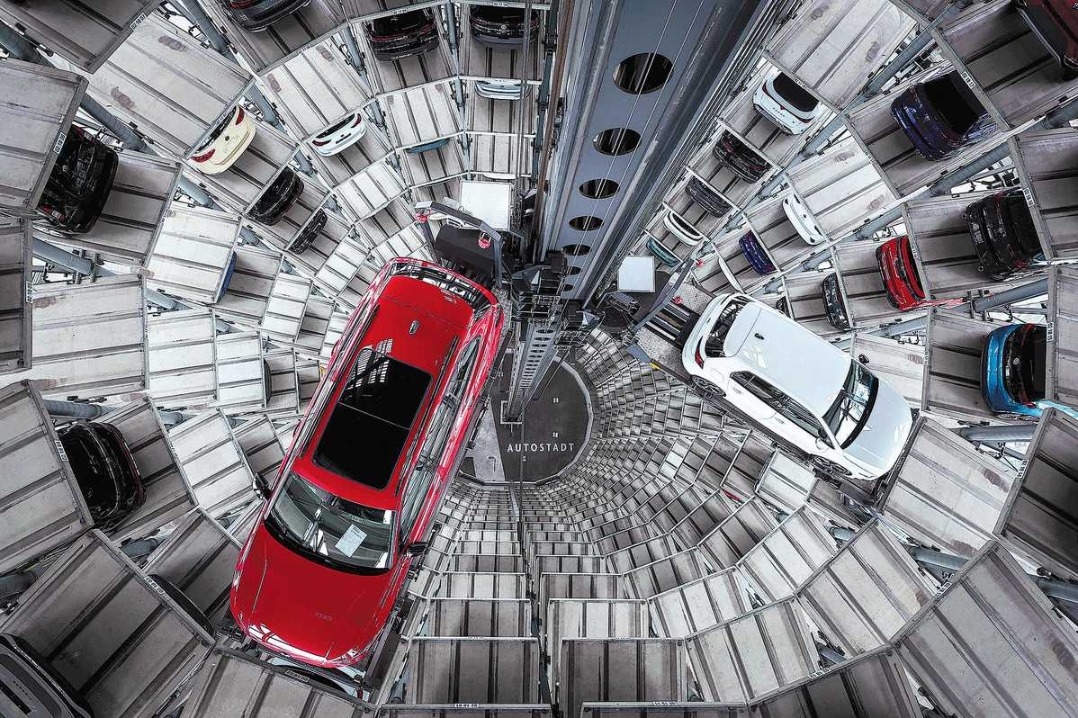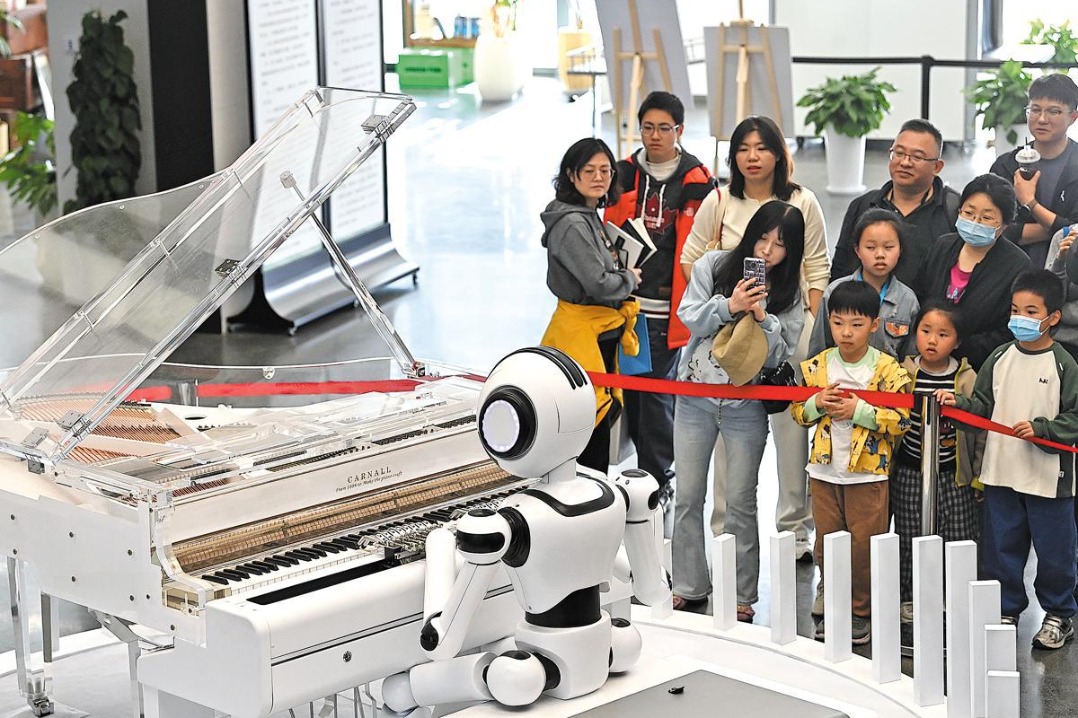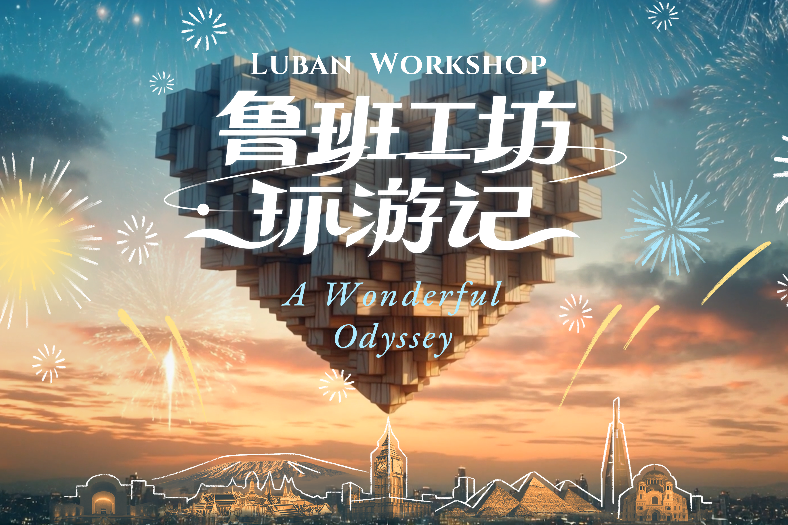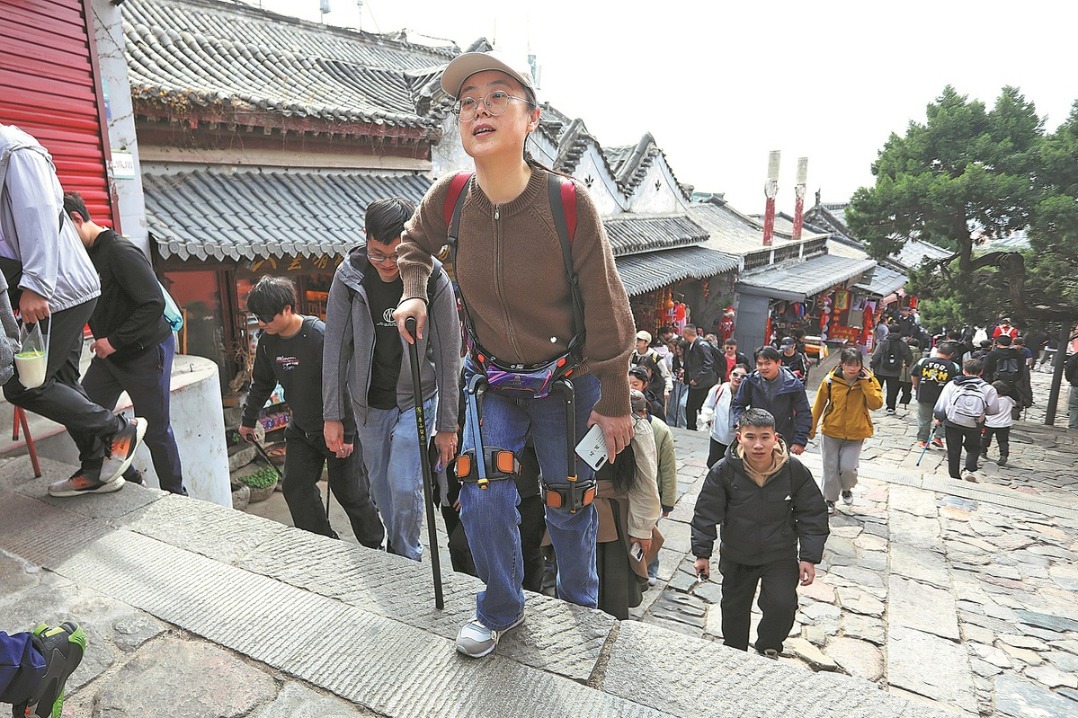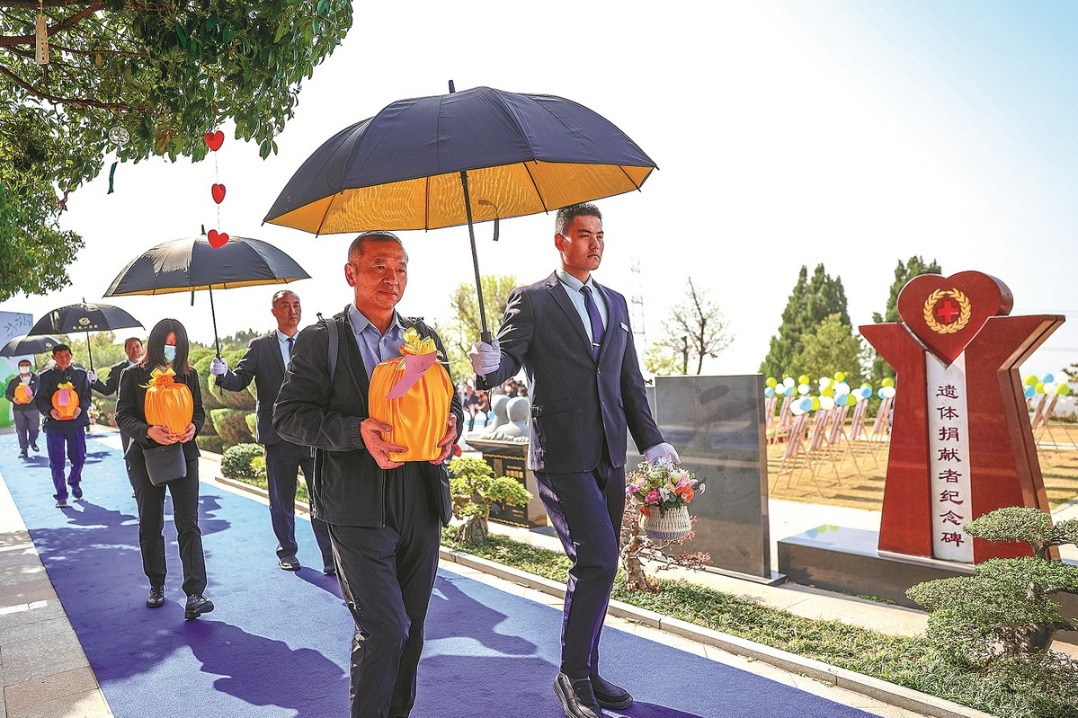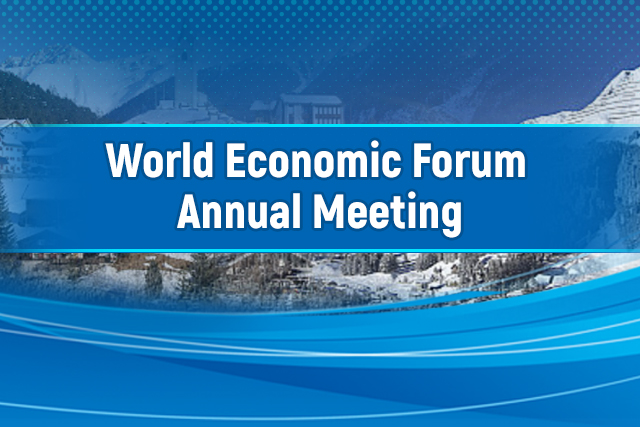Expo site designer calls Grand Ring 'a symbol of our times'
By Jiang Xueqing in Osaka, Japan | chinadaily.com.cn | Updated: 2025-04-11 16:38

The Expo 2025 site design producer called the Grand Ring, the world's largest wooden architectural structure, "a symbol of our times" that represents the venue's design philosophy of "unity in diversity".
"This ring is a symbol of our times — of 2025, the early 21st century. At a time when diversity around the world seems to be coming apart, this ring reflects our desire to hold it all together. It's where nations came together to think about the future," said Japanese architect Sou Fujimoto.
The Grand Ring, conceived by Fujimoto, is a symbol of the Expo 2025 site. With a building area of 61,035.55 square meters, it has been recognized by Guinness World Records as the world's largest wooden architectural structure.
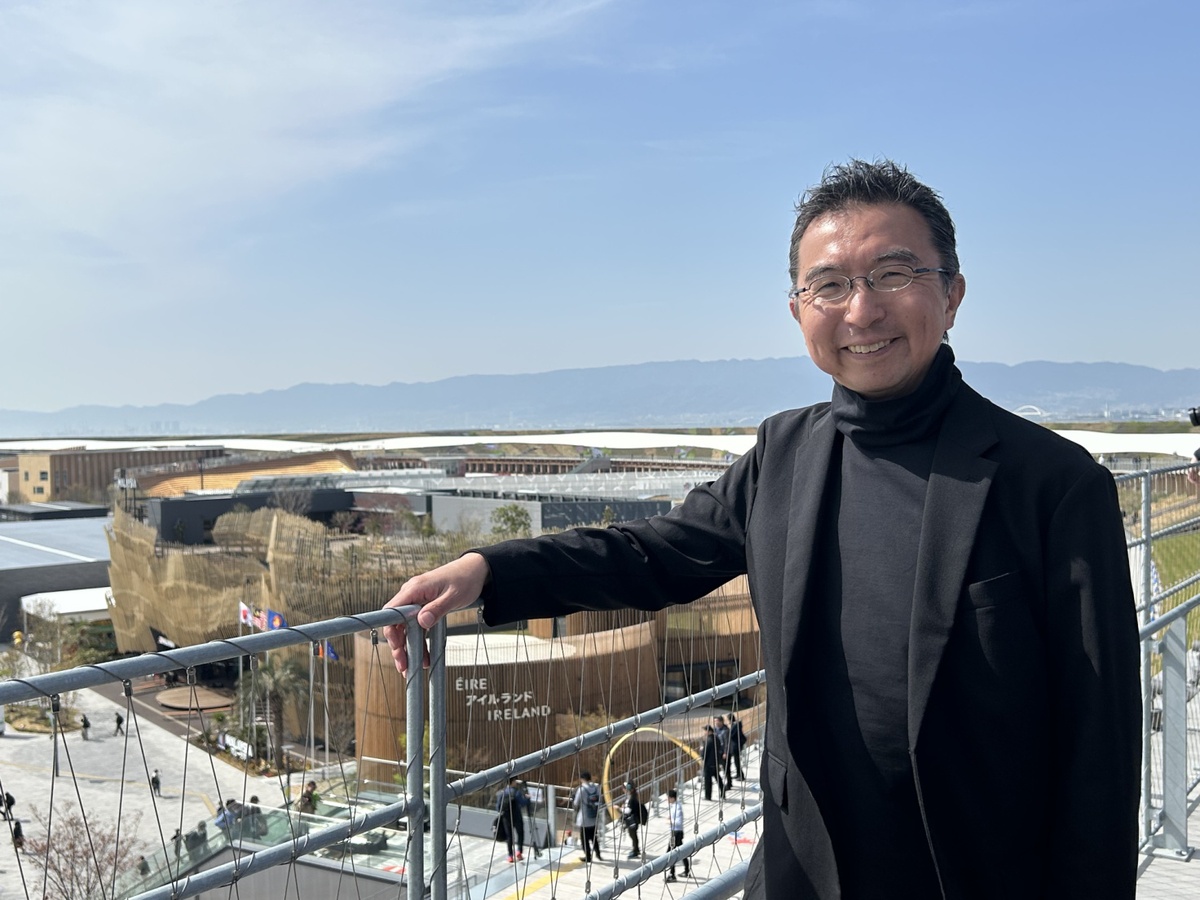
Recently, there has been a growing trend toward using wood in the construction of office buildings, universities, and large-scale residential complexes. Wooden architecture is being promoted as a step toward a more sustainable society, as trees absorb carbon dioxide, helping to reduce environmental impact.
"Japan has a rich history of wooden architecture spanning over a thousand years, and we are blessed with abundant forests. However, we haven't fully harnessed these natural materials to their greatest potential. For this world expo, I aimed to blend traditional design principles with cutting-edge technology to create the largest wooden structure ever built," Fujimoto said during a Media Day event hosted by the Japan Association for the 2025 World Exposition in Osaka, Japan, on Wednesday.
The ring measures about 615 meters in inner diameter, 675 meters in outer diameter, 30 meters in width, and stands about 12 meters tall.
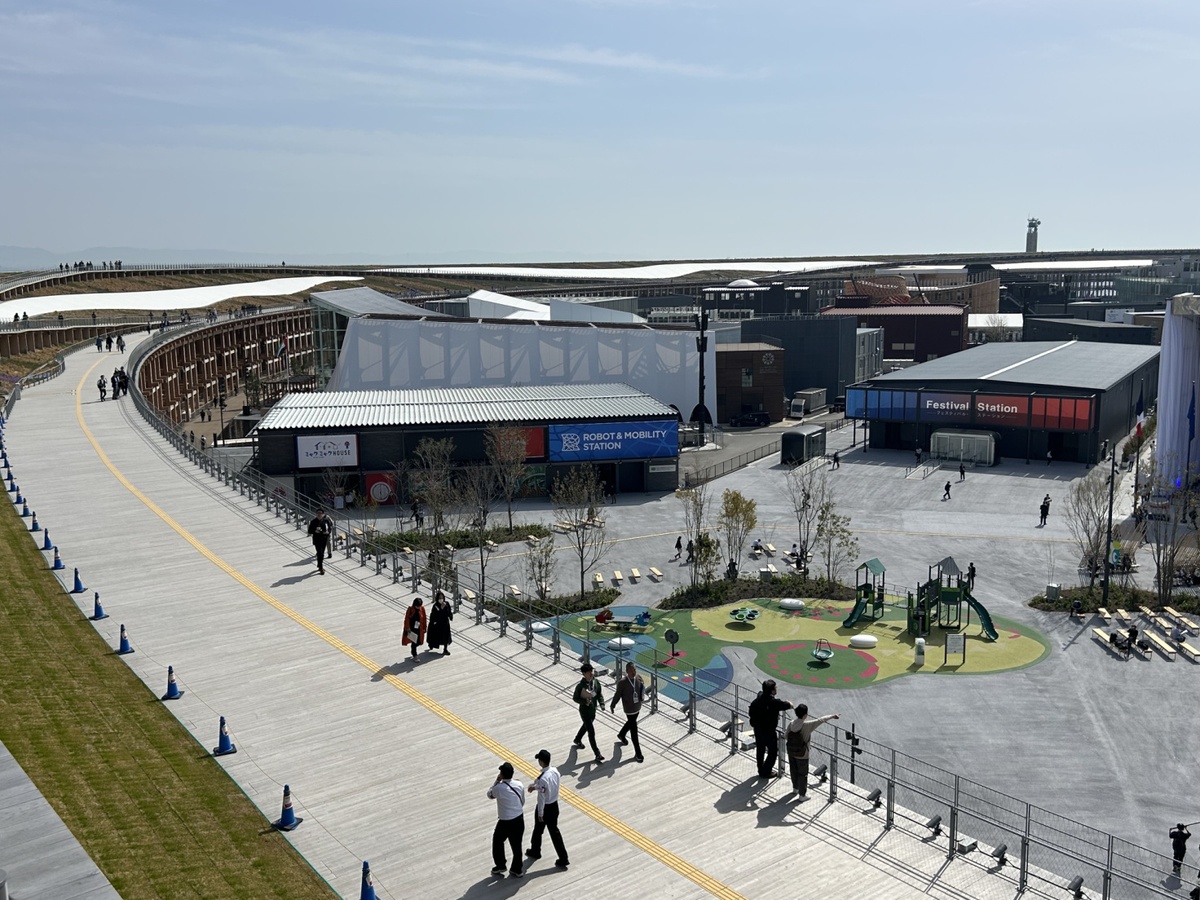
From its highest point, visitors can take in the full circular form of the structure, with pavilions from around the world gathered within. It is a symbol of global diversity and unity, reflecting the shared vision of building the future together.
"The ring is creating a place where diversity can connect. That is something extremely precious, especially when you think about the current state of the world. This, I believe, is one of the most meaningful aspects of holding the expo," Fujimoto said.
The outer edge of the ring is elevated. By doing so, Fujimoto highlighted that the sky is framed in a circular shape. This single shared sky that everyone looks up to, regardless of culture or background, can create a shared experience.
"Inside this framed space, a dreamlike, ideal world is revealed. I really hope visitors can imprint this image into their memory — as a vision of the future. A future where diversity, despite the world's instability, can still be connected through our efforts. I want people to feel hope — that the world can build a better future together," Fujimoto said.
He believes that children and young people who visit and witness this global gathering will feel the closeness and diversity of the world, get excited and inspired, and begin engaging with the world.
"The expo itself is just six months long. But the impact — the surprise and excitement they feel — can change their lives and become the driving force that shapes the next 50 to 100 years of Japan. That's the purpose of this expo — to pass the future on to the younger generation, and to hand over a better future," he said.
The Grand Ring combines modern construction techniques with traditional Nuki joints — an architectural method commonly found in Japanese shrines and temples. Designed as the primary circulation route, it guides visitor flow throughout the expo site while providing a sheltered, comfortable path protected from wind, rain, and sunlight.
The ring is also a symbol of a future society living in harmony with nature. The top of the ring is planted with a variety of greenery and flowers. Because of that, the scenery changes with the seasons.
One feature of this expo is that each country puts great thought into expressing their identity, and many are using natural materials. Malaysia's pavilion is inspired by bamboo. The Philippines is based on traditional basketry, and many pavilions are wooden.
Because the central concept is this wooden ring, many pavilions are responding to that theme. But beyond that, there is a global shift toward sustainable societies and coexistence with nature.
"It's truly symbolic of our era that so many countries are using natural materials," Fujimoto said. "This reflects a broader shift in architecture and construction, where there's a greater emphasis on the use of natural materials."
In addition, the architects have created a forest at the center of the venue — known as the "Forest of Tranquility"— encircled by the double-layered ring structure.
"In this expo, instead of placing something artificial at the center, we wanted to invite nature in and place it at the heart of the venue. By doing that, we're expressing our desire for a society that coexists in harmony with nature," he said.
This project was initiated during the COVID-19 pandemic, a time when the future of in-person gatherings was deeply uncertain. However, Fujimoto believed that in the post-COVID era, the importance of real-life, face-to-face experiences would only grow stronger.
"In that sense, the fact that people from around the world are gathering here in person is a miracle. Being able to experience this venue firsthand, including the ring, is one of the greatest values of this expo," he said.





